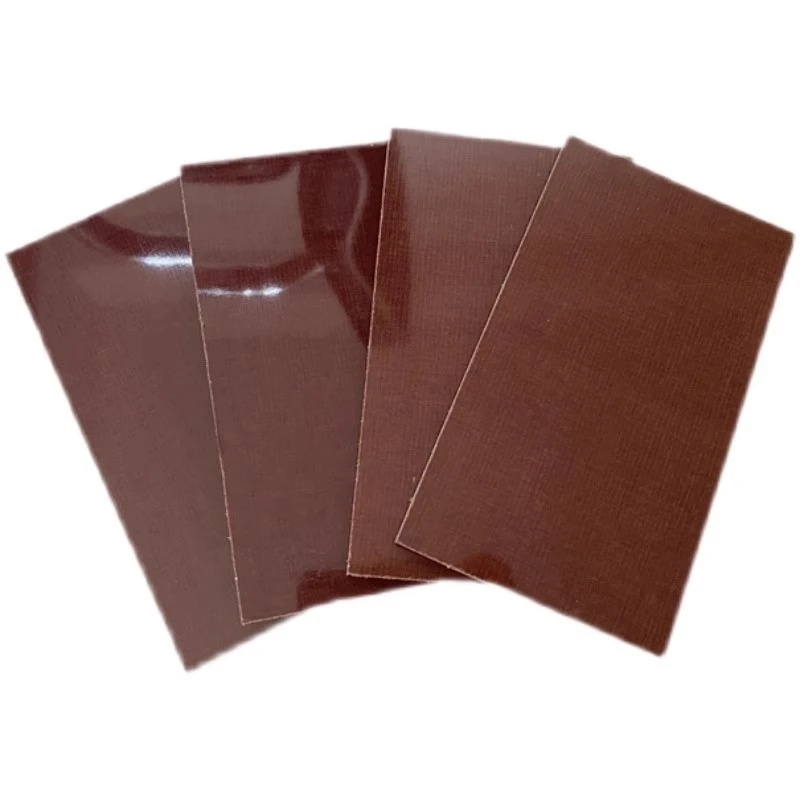Chemical Composition and Properties
Molecular Structure
Phenolic resin, derived from the reaction between phenol and formaldehyde, forms a complex three-dimensional network of cross-linked molecules. This special structure contributes to its remarkable warm soundness and fire resistance. Epoxy gum, then again, is synthesized through the polymerization of epoxide bunches, coming about in a flexible polymer with amazing cement properties and chemical resistance.
Thermal Characteristics
The thermal properties of phenolic and epoxy resins diverge significantly. Phenolic resin maintains its structural integrity at temperatures exceeding 200°C, making it the preferred choice for high-temperature applications. Epoxy resin, while less heat-resistant, offers superior performance in moderate temperature environments, typically up to 150°C, and excels in thermal conductivity for specific formulations.
Chemical Resistance
Epoxy tar illustrates exceptional resistance to a wide cluster of chemicals, counting acids, soluble bases, and solvents. This quality makes it priceless in destructive situations. Phenolic tar, whereas showing great chemical resistance, especially to oils and solvents, may be more helpless to corruption in unequivocally acidic or soluble conditions.
Manufacturing Processes and Applications
Production Techniques
The production of phenolic and epoxy resins involves fundamentally different chemical processes. Phenolic resin is manufactured through a condensation reaction between phenol and formaldehyde, typically under acidic or basic conditions, with tight control over temperature and catalyst use to ensure proper polymerization. In contrast, epoxy resin is created through a step-growth polymerization of epichlorohydrin and bisphenol-A or other precursors. This process allows precise customization of resin properties by altering epoxy and curing agent types, offering greater flexibility for tailored performance in specific applications.
Curing Methods
Phenolic resins cure through a thermosetting process involving high heat and pressure to induce irreversible cross-linking, which results in a rigid, heat-resistant material ideal for demanding applications. This curing method ensures stability under extreme conditions but generally requires specialized equipment. Epoxy resins, on the other hand, can be cured under a wider range of conditions. Some formulations allow for ambient temperature curing, while others benefit from elevated temperatures for enhanced strength and chemical resistance, offering more processing options and adaptability to different manufacturing environments.
Industry-specific Uses
Phenolic resin is widely used in industries that require flame resistance, thermal stability, and mechanical strength. Typical applications include electrical insulation panels, brake pads, and heat-resistant aerospace parts. Its ability to withstand high temperatures and its non-flammable nature make it suitable for fire-critical components. Epoxy resin, known for its excellent bonding and chemical resistance, is commonly used in structural composites, electronic encapsulation, and corrosion-resistant coatings. Its versatility supports widespread use across marine, automotive, construction, and electronics industries, where durability and strong adhesion are essential.
Performance Comparison and Selection Criteria
Mechanical Strength
Epoxy resin is widely recognized for its superior mechanical properties, particularly its high tensile strength and excellent impact resistance. These attributes make epoxy resin ideal for applications where mechanical stress, vibration, or physical force is a concern, such as in aerospace or high-performance electronics. Although phenolic resin does not match epoxy in terms of overall strength, it provides exceptional dimensional stability and low creep under long-term loading, especially in elevated-temperature conditions, making it suitable for thermally demanding environments.
Environmental Considerations
Environmental impact is a growing factor in resin selection. Phenolic resins can emit volatile organic compounds (VOCs) during manufacturing and curing, posing health and environmental risks if not properly controlled. Epoxy resins, though often perceived as cleaner, may contain bisphenol A (BPA), which has raised concerns regarding long-term safety. However, recent innovations in bio-based epoxy formulations have created more sustainable options that reduce the environmental footprint while maintaining desirable performance characteristics, aligning with the increasing demand for eco-conscious materials in manufacturing.
Cost-Benefit Analysis
When comparing phenolic and epoxy resins, it’s important to evaluate total lifecycle costs, not just initial material pricing. Phenolic resins are typically more economical to purchase but may require high-temperature curing and specialized equipment, raising operational costs. In contrast, epoxy resins, while more expensive upfront, offer easier handling and faster processing times. This can result in lower labor costs, less waste, and improved production efficiency. Therefore, epoxy may offer better value in high-throughput or precision manufacturing settings despite its higher initial cost.
Conclusion
The choice between phenolic resin and epoxy resin for insulating sheets depends on a multitude of factors, including thermal requirements, chemical exposure, mechanical stress, and environmental considerations. Phenolic resin stands out for its exceptional heat resistance and flame retardancy, making it ideal for high-temperature and safety-critical applications. Epoxy resin, with its superior mechanical strength, versatility, and chemical resistance, offers advantages in a broad range of industrial applications. As technology advances, hybrid systems and novel formulations continue to emerge, blurring the lines between traditional resin categories and offering new possibilities for optimized performance in insulating sheet manufacturing.
Contact Us
For expert guidance on selecting the ideal resin for your specific insulating sheet requirements, contact our team of specialists at info@jhd-material.com. With over 20 years of experience in producing and selling insulating sheets, we can provide tailored solutions to meet your unique needs and ensure optimal performance in your applications.






